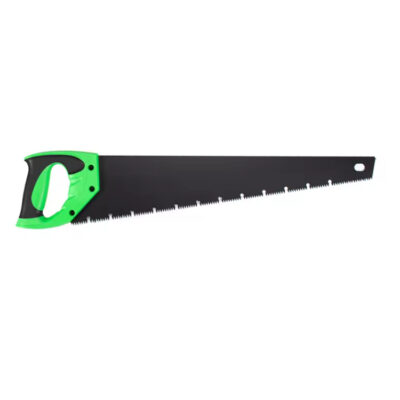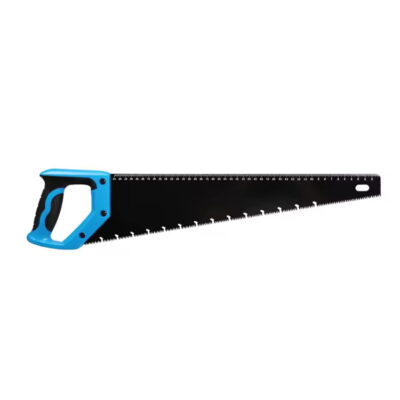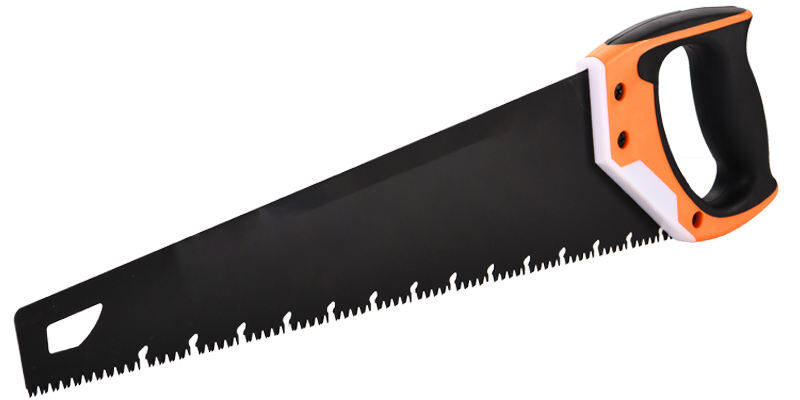🔧 Introduction: Two Essential Cutting Tools
When it comes to cutting tasks, hand saws and hacksaws are two of the most widely used tools across industries. While both are designed for manual cutting, their applications differ significantly depending on the material and project type. For procurement managers, distributors, and workshop owners, understanding the differences between these tools is essential for making informed sourcing decisions.
🪚 Hand Saw Applications in Woodworking
The hand saw is traditionally associated with woodworking. Its larger blade and coarse teeth make it ideal for cutting through wood, plywood, and soft materials.
Key applications include:
-
Construction framing and carpentry work.
-
Furniture making where precise cuts are required.
-
General workshop tasks for trimming or shaping wood.
Industrial buyers often source from reliable Hand Saw Manufacturers who ensure durability through high-carbon steel blades and ergonomic wooden or plastic handles.
🔩 Hacksaw Applications in Metal and Plastic
Unlike hand saws, the hacksaw is specifically designed for cutting harder materials like metal and plastic. Its thin blade with fine teeth ensures a smoother, more controlled cut.
Common uses include:
-
Metalworking for cutting pipes, rods, and steel sheets.
-
Plumbing tasks for trimming plastic or copper pipes.
-
Automotive repairs where precision cuts are necessary.
For procurement in heavy-duty sectors, sourcing from specialized Hacksaw Manufacturers ensures tools that withstand high tension and frequent industrial use.
⚙️ Comparing Blade Design and Performance
Both tools differ in blade design, which impacts performance:
-
Hand Saw: Wider blade, larger teeth, designed for speed over precision.
-
Hacksaw: Narrower blade, finer teeth, optimized for accuracy and harder materials.
Understanding these differences allows buyers to stock the right mix of tools to serve woodworking, plumbing, and mechanical clients.
📐 Factors for Procurement Managers to Consider
When deciding between hand saws and hacksaws, B2B buyers should evaluate:
-
Material Type: Wood vs. metal/plastic.
-
Cutting Speed vs. Precision: Faster rough cuts vs. fine, controlled cuts.
-
Ergonomics: Comfortable grip for long-duration use.
-
Durability: Blades that resist wear and can be replaced when needed.
By sourcing from established Hand Tools Manufacturers, distributors can access both categories with consistent quality under one supply chain.
🌍 Benefits of Offering Both in a Product Range
For wholesalers and distributors, stocking both hand saws and hacksaws provides a strategic advantage:
-
Wider customer base across woodworking, plumbing, and automotive sectors.
-
Bulk order opportunities with retailers requiring comprehensive tool sets.
-
Customization options such as branded handles and packaging.
This variety strengthens a distributor’s ability to serve multiple markets while maintaining supply chain efficiency.
✅ Conclusion: Choosing the Right Tool for the Job
Hand saws and hacksaws may appear similar, but their functions diverge based on material and project requirements. For construction and woodworking, hand saws are indispensable. For metal and precision tasks, hacksaws provide unmatched efficiency.
By sourcing from trusted hand saw and hacksaw manufacturers, procurement managers ensure durability, safety, and long-term customer satisfaction—boosting overall productivity in every project.
























